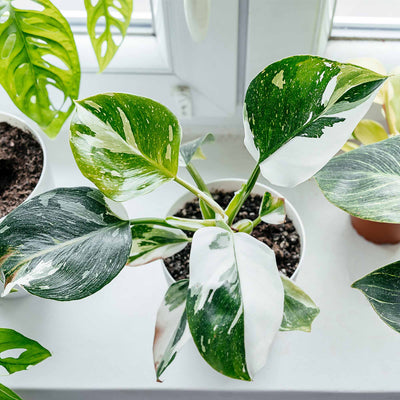Aroid Plants for Sale Online
6 products
We’ve been growing landscape plants since 1980. We know it’s almost impossible to achieve a 100% survival rate. That’s why we’ve got you covered!
Our Perfect Plants 1 Year Warranty is roughly 10% of your plant total. It’s a cost-effective way to guarantee your plants for a full year.
If a plant dies up to 1 year after purchase, whether it's a weather related issue, human error, or anything else, just send us a picture at customerservice@myperfectplants.com and we’ll get you a store credit for the plant you purchased. The warranty does not cover the cost of shipping for any replacement.
Warranty must be purchased at the time of checkout and cannot be added after your order has been completed.
It’s that simple! Enjoy your new plants in confidence. Guarantee your plants for a full year today!
6 products
Code END10 for 10% Off Site Wide Ends at Midnight
Aroid is the common name for any plant in the family Araceae, also known as arums. You know these plants more commonly as Monsteras, Philodendrons, and Anthuriums, among others.
Most aroids are from the tropical regions of the Americas or west Africa. Aroid house plants share the characteristics of rather small flowers occurring in clusters called an inflorescence and all located together on a stick-shaped growth called a spadix.
The spadix is often enclosed or tended by a spathe, which is sort of like a big fleshy leaf surrounding the spadix. Spathes are often brightly colored. It sounds scientific, but think of a candle in a wall sconce, and you’ll get the idea.
There are well over 3,000 species in the aroid plant family, and quite a few have become popular as houseplants. Aroids or arums are usually grown for their unique foliage and not for their flowers.
Familiar members of the aroid family include popular houseplants like Philodendrons and Monsteras, as well as Alocasias, Calla lilies, pothos, peace lilies, and Anthuriums.
The popular Monstera deliciosa is an aroid known for the holes in its leaves.
The famous and easy-to-grow ZZ plant (Zamioculcas zamiifolia) is also an aroid. Known for its glossy leaves and tolerance of less-than-perfect plant parenting, ZZ plants can tolerate lower light levels. They will grow well under fluorescent lighting, making them a good choice for those without office windows who need a little green in their lives.
Examples of aroids that grow in the wild include Jack-in-the-Pulpit (Arisaema triphyllum) and Skunk cabbage (Symplocarpus foetidus).
Most aroids are subtropical or tropical and live in the dappled, indirect light of the forest floor or the mid-canopy. They enjoy bright but indirect light. Full sunshine will often cause scorched leaves. A well-lit location near a window that does not get direct sunlight exposure is perfect.
Aroids also need pots with excellent drainage. While they are humidity-loving plants, they do not like their roots to sit in water. Make sure the container has holes in the bottom. Overwatering is one of the leading causes of death for houseplants.
Aroids should be watered thoroughly but allowed to dry out a bit between waterings. Imagine taking a full and quenching drink of water and not needing any more for a while. Check the soil by sticking your finger in the pot and feeling the moisture. If the top one to two inches is dry, it is time to water.
Philodendrons especially will enjoy a moss pole to climb up and will root into the pole. Since roots are already present in the moss, a new plant can be grown when the old one gets too large by simply trimming off a piece of the pole and plant–leaving them attached to each other.
Some aroids can grow quite large over time, even when kept indoors. Repot in the late winter or early spring, before the main growing season.
The occasional addition of a general, balanced aroid fertilizer will also benefit your indoor aroid. Fertilizing can be postponed in the winter months when growth is slower. Once a year, flush the soil in your pot by placing it in the sink and allowing the water to gently run until the water runs out the drainage holes for a few minutes. Please don’t overdo it and wash out all your potting mix.
Some aroids are epiphytes, meaning that they don’t need soil for their roots. They are found in nature, growing up in the tree canopy, rooting into moss and bark on tree limbs, or just out into the air. Others grow on the forest canopy, and a few have adapted to drier conditions.
In a family of over three thousand species, no one rule applies to every case. Generally, aroids are happy with potting soil that has excellent drainage. Adding perlite and orchid bark will increase the aeration and drainage of your potting soil mix and is highly recommended. Pre-mixed Aroid Potting Mix is now available!
Shop our collection of aroid plants for sale today!
Subscribe Today & Save On Your First Order!














